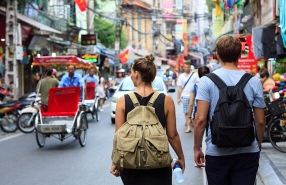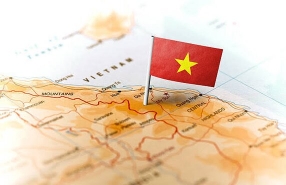Banh Mi Vietnam - A Complete Guide From Origins To Best Spots

Banh Mi Viet Nam - Everything you need to know
1. What is Banh Mi?
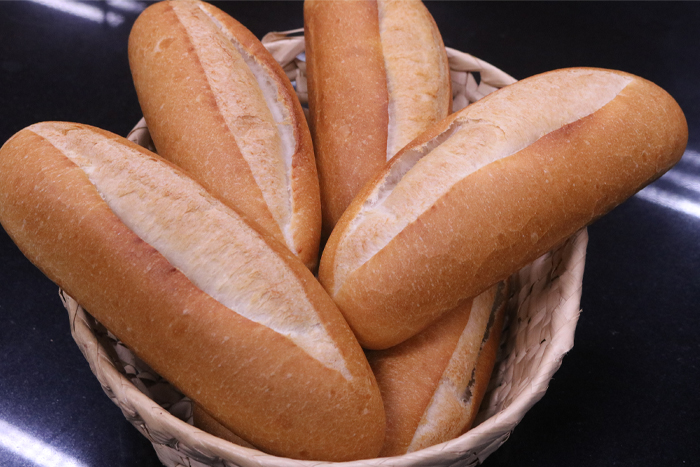
In 2011, Banh Mi Vietnam was officially recognized as a proper noun in the Oxford English Dictionary. No longer just a general term meaning "bread" for various wheat flour-based products, "Banh Mi" today has become a distinct Vietnamese culinary dish acknowledged worldwide.
After rising in prominence on the global culinary map, Banh Mi was also featured on Google's homepage across more than 10 countries to celebrate the anniversary of the Vietnamese sandwich's addition to the dictionary.
2. History of Banh Mi: Between France and Vietnam
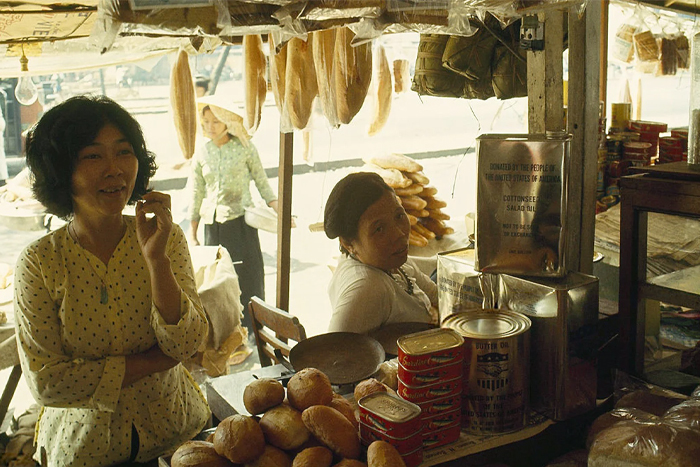
3. Why you should absolutely taste Banh Mi in Vietnam
Authentic and unforgettable taste: Eating Banh Mi in Vietnam offers a distinctly authentic experience. Every element from freshly baked baguettes to locally sourced ingredients combines harmoniously, creating flavors that are simply unmatched elsewhere.
Freshness and quality: In Vietnam, street vendors typically make Banh Mi sandwiches fresh to order. Ingredients such as pickled vegetables, herbs, and meats are prepared daily, ensuring top-notch freshness and quality in every bite.
Incredible value: Vietnam is famous for delicious food at affordable prices, and Banh Mi is no exception. For as little as 15,000 to 30,000 VND (around $0.60 to $1.20 USD), travelers can enjoy a meal that’s filling, nutritious, and packed with flavor.
Cultural immersion: Eating Vietnamese street food is an essential aspect of experiencing Vietnam authentically. Sitting on tiny plastic stools, chatting with friendly local vendors, and watching street life pass by creates unforgettable travel moments.
Infinite variety: Vietnam is a country of culinary diversity, and Banh Mi perfectly represents this. Every region, city, and even vendor has their own unique twist on the sandwich, ensuring you never have the same Banh Mi twice.

World leaders are also fans of Banh Mi Vietnam!
- One notable event highlighting the sandwich's global appeal occurred in November 2017. During his visit to Vietnam for the APEC Summit, Australian Prime Minister Malcolm Turnbull enjoyed a Banh Mi for breakfast on the streets of Da Nang. "This is the first time I've eaten Banh Mi! I love the fresh taste of Vietnamese food," shared the Prime Minister.
- Former U.S. President Barack Obama was no exception. Upon arriving in Vietnam, he didn't hesitate to immediately enjoy a delicious Banh Mi. The flavor of Vietnamese Banh Mi is exquisitely refined, combining fresh vegetables, flavorful sauces, pâté, meat or eggs inside a warm, crispy baguette.
4. Where to find the best Banh Mi in Vietnam
Hanoi
Banh Mi 25: 25 Hang Ca, Hoan Kiem, Hanoi. Famous for its high-quality ingredients and perfectly crispy baguette, located in Hanoi's Old Quarter.
Banh Mi Tram: 252 Cua Nam, Hoan Kiem, Hanoi. Known for its delicious pâté, homemade mayo, and generous fillings.
Ho Chi Minh City (Saigon)
Banh Mi Huynh Hoa: 26 Le Thi Rieng, District 1, Ho Chi Minh City. Often dubbed the "best Banh Mi in Saigon," packed generously with layers of meats, pâtés, and pickles.
Banh Mi 37 Nguyen Trai: Alley 39 Nguyen Trai, District 1, Ho Chi Minh City. Famous for its grilled pork patties, freshly made right before your eyes.
Hoi An
Banh Mi Phuong: 2B Phan Chu Trinh, Hoi An. Internationally renowned (thanks partly to Anthony Bourdain), offering a mix of meats, homemade pâtés, and special sauces.
Madam Khanh - The Banh Mi Queen: 115 Tran Cao Van, Hoi An. Lovingly prepared by Madam Khanh herself, with carefully sourced ingredients and flavorsome marinades.
5. How to enjoy Banh Mi like a local
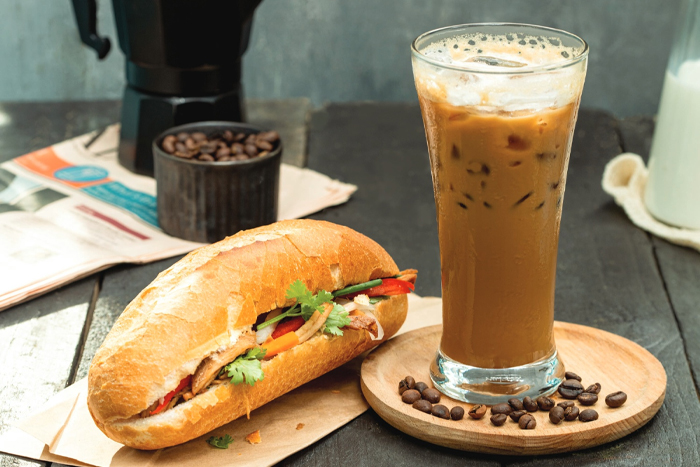
- When to eat: Banh Mi is versatile: it's enjoyed for breakfast, lunch, a quick snack, or even a late-night meal. Breakfast-time Banh Mi, often with eggs or sausage, is a local favorite.
- How to order: Typically, you can simply point at the fillings you like. Vendors usually offer customization options - feel free to request more or less spice, or extra pickles!
- What to drink: Pair your Banh Mi with iced Vietnamese coffee (Ca phe sua da), fresh juice, or iced tea (Tra da) for an authentic street food experience.
> Vietnamese pate
> What to eat in Vietnam ?
> 2 weeks in Vietnam
> Vietnam packages tours
Bánh mì can be a relatively healthy choice for international travelers, depending on how it’s made. The Vietnamese sandwich typically combines a crisp baguette with a variety of fillings like lean grilled meats, fresh herbs, pickled vegetables, cucumber, and sometimes pâté or mayonnaise. The fresh vegetables and herbs provide fiber and vitamins, while the protein keeps you full and energized. However, the bread is white and can be high in carbs, and richer versions with extra mayonnaise or fatty meats are higher in calories. To make it healthier, you can ask for less mayo, choose grilled rather than fried meats, and load up on the vegetables. Overall, it’s a balanced, flavorful, and satisfying option if enjoyed in moderation - perfect for travelers looking for an authentic Vietnamese meal on the go.
Yes, bánh mì is extremely popular in Vietnam and is considered one of the country’s most iconic and beloved street foods. You can find Banh Mi Vietnam almost everywhere from busy city streets to small rural towns - sold at roadside carts, local bakeries, markets, and even in modern cafés. It’s a go-to meal or snack for many Vietnamese people because it’s quick, tasty, and affordable. Locals eat it for breakfast, lunch, or a light dinner, and there are countless variations depending on the region and vendor, from classic pork and pâté to vegetarian and seafood options. For travelers, it’s also one of the easiest and most authentic ways to experience Vietnamese cuisine.
In Vietnam, a Banh Mi (bánh mì) - the famous Vietnamese baguette sandwich - is not only delicious but also very affordable, making it a favorite for international travelers. Prices typically range from 20,000 to 40,000 VND (about $0.80 to $1.50 USD) depending on the location and ingredients. In small street stalls or local markets, you can often find simple versions with pork, pate, pickled vegetables, and herbs at the lower end of the range. At more tourist-oriented shops or with premium fillings like grilled beef or special seafood, the price may go slightly higher. Either way, bánh mì remains a budget-friendly and authentic Vietnamese food experience you shouldn’t miss.
Related travel guide
Other similar articles
CUSTOMIZABLE BY LOCAL EXPERTS
Personalized trip at the original price!
REFUND GUARANTEE
We believe in our work and promise to give you money back.
GOOD PRICE / QUALITY
95% satisfied more than expected!
24/7 LOCAL SUPPORT
We are always available online to provide assistance at any time.
Most read articles
Autour Asia is highly recommended on
Embracing the mission of "Satisfied more than expected" and providing authentic experiences, we have received numerous recommendations on reputable travel forums:













